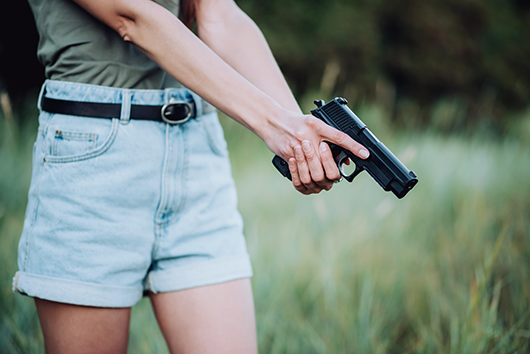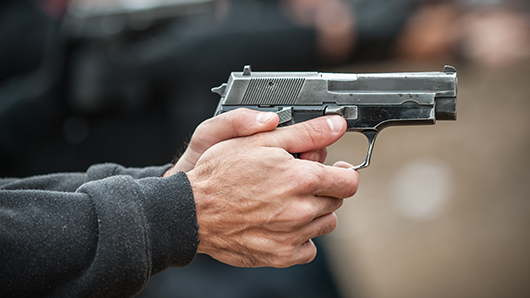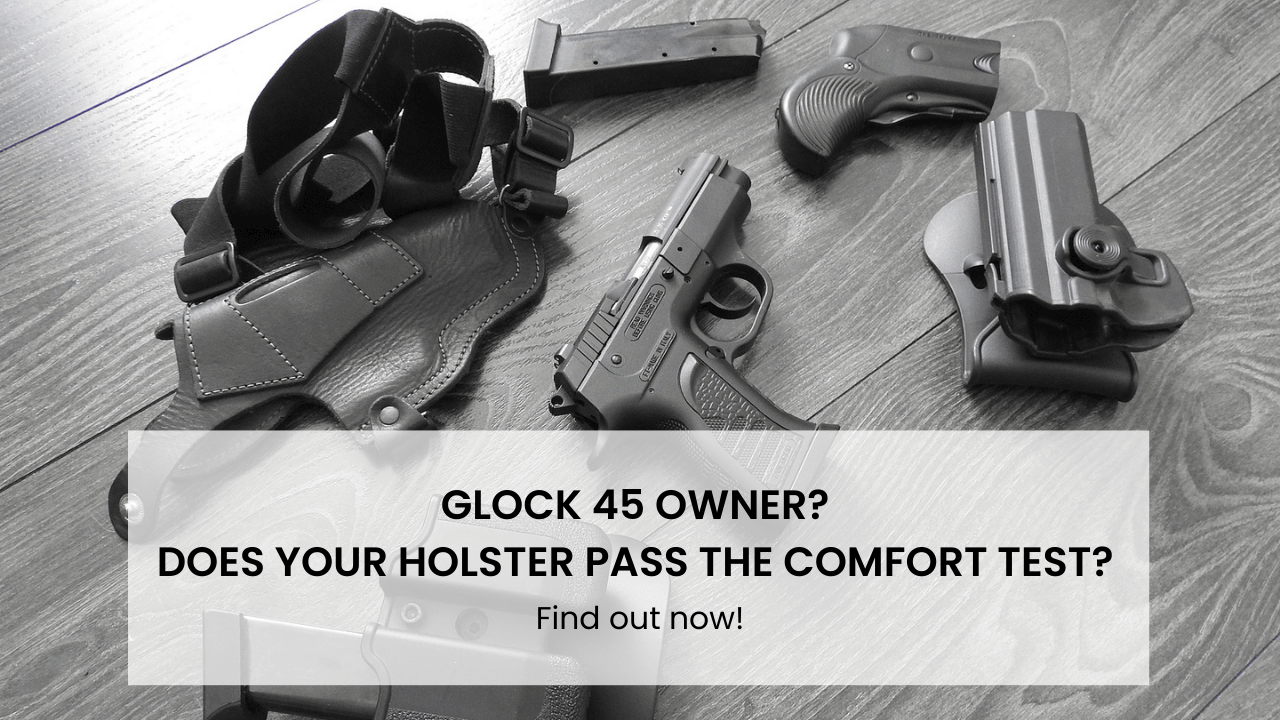Is the SIG Sauer P229 Most Suitable for Concealed Carry?
Nov 2nd 2020

When searching for a suitable concealed carry handgun, many of us opt for a compact 9mm. There are advantages and disadvantages to carrying a firearm of this size. While a compact is light and convenient to carry, the reduced weight and height correspond to increased recoil and fewer ammunition rounds.
So why should you consider the SIG Sauer P229 for your carry gun?
SIG Sauer pistols have been the choice of professionals for decades, from U.S. special operations forces (SOF), such as the Navy SEALs, to the U.S. Secret Service, to numerous law enforcement agencies — foreign and domestic.
Available in several caliber variants, the P229 is a semi-automatic, hammer-fired, locked-breech DA/SA handgun operated by a modified Browning short-recoil system. Striking a good balance between capacity, compactness, and controllability, the SIG is a combat-proven pistol that should fulfill your need for a reliable defensive weapon.
The SIG mates a stainless-steel slide to an aluminum-alloy frame. Both metals are well known, separately, for their corrosion resistance. However, they’re also subjected to an additional PVD (physical vapor deposition) metal finishing process to build on this quality.
Today, in a sea of striker-fired handguns, a double- and single-action, hammer-fired pistol with a decocking lever seems like something of a throwback. A reminder of a time when the “wonder nine” wave hit and the Glock was the only well-known striker-fired handgun. But that shouldn’t stop you from considering the SIG.

Double Action and Single Action (DA/SA)
Double action refers to a trigger mechanism that, when squeezed, performs two actions, both cocking and releasing the hammer or striker. The trigger only performs one action in single action — releasing a hammer or striker that had been previously cocked, either with the thumb or by retracting the slide.
When the SIG P229 is charged and the hammer is cocked, the first shot will be single action. However, if you’d prefer, you can lower the hammer using the decocking lever. This will allow you to carry the pistol in much the same way as a double-action revolver with an exposed hammer.
As a result, your first shot will be double action and all subsequent shots will be single action as the reciprocating slide recocks the hammer. This is referred to as DA/SA, or double action/single action, because it can be fired in two different ways. The proper way to carry a DA/SA semi-automatic pistol is in Condition 2: full magazine, loaded chamber, hammer down.
Whether the trigger-cocking action is optimal is a matter of debate. There is a noticeable difference in trigger pull, both in length and weight, between the first and second shots. This inconsistency is regarded by some as a detriment to practical accuracy, especially under stress, and may require more diligent training to overcome.
Others regard this difference as an asset, rendering the pistol less susceptible to unintentional discharge.
Double Action for Safety
The risk of unintentional discharge is significantly reduced by strict observance of firearms safety rules.
However, there is still a concern regarding either the holster’s mouth, a retention accessory, such as a thumb break, or the cover garment entering the trigger guard as the pistol is holstered and firing the gun.
Carrying a handgun in the 1-o’clock position, also known as appendix carry, is one of the most controversial carry positions because of a mishap’s dire consequences.
The heavier double-action trigger pull, which is more than twice the weight of its single-action pull, is seen as a potential remedy. The shooting hand’s thumb can rest on the hammer as the gun is being holstered, ensuring that it remains stationary.
Practicing proper holstering and investing in a good-quality holster will further reduce this risk.
Second-Strike Capability
There is another advantage of the double-action system that may be important to some — second-strike capability. If the first hammer or striker blow is not sufficient to detonate the primer in a single-action handgun, you have to wait 30 seconds (or longer) to open the action to avoid causing an out-of-battery ignition. If the round doesn’t fire at that time, you have to manually cycle the action to eject the unfired round.
In a double-action handgun, you can simply squeeze the trigger a second time. If the primer failed to detonate due to a light strike, or the slide was slightly out of battery, this may be enough to solve the problem.
P229 Variants
The P229 is available in several variants. Other than the standard mode, three standouts are as follows:
- The Legion Compact SAO is single-action only. This variant is intended for customers who prefer the manual safety lever and light, consistent shot-to-shot trigger pull that accompanies this action type.
- Nightmare has a two-tone color scheme — all-black slide and frame with contrasting controls — and X-Ray3 day/night sights. The X-Ray3 sights, front, and rear, are tritium illuminated to increase visibility in low-light conditions. The rear sight is serrated and high-profile with a squared face for one-handed emergency charging. The Nightmare’s ergonomic Hogue grips are made from G10.
- Legion RX Compact comes equipped with the X-Ray3 day/night sights, which cowitness with the ROMEO1 Reflex Sight, a 3-MOA miniature red-dot (MRD) sight with SIG’s own motion-tracker technology to ensure that the battery doesn’t run dry during idle periods.
Caliber Variants
The P229 is available in three calibers: 9×19mm, .40 S&W, and .357 SIG. The 9mm is, by far, the most popular of the three, balancing moderate recoil and fast sight recovery with adequate stopping power. The other two cartridges are worth considering if you want some extra punch.
The .357 SIG cartridge uses a .40 S&W case necked down, so all you have to do to convert one to the other is swap the barrels.
It does produce a sharper recoil impulse and report, however, especially in a compact handgun. If you’re recoil shy, you may want to stick with the 9mm.
Final Thoughts
If you’ve found the right handgun for your carry needs, the next step is finding the right holster to pair it with. A good custom holster allows you to carry your firearm confidently, knowing that it’s both secure and available to you at a moment’s notice.
At Incognito Concealment, we offer both the selection and the expertise to help you find the perfect fit. If you have any questions regarding holsters, give us a call at (586) 333-4240.











